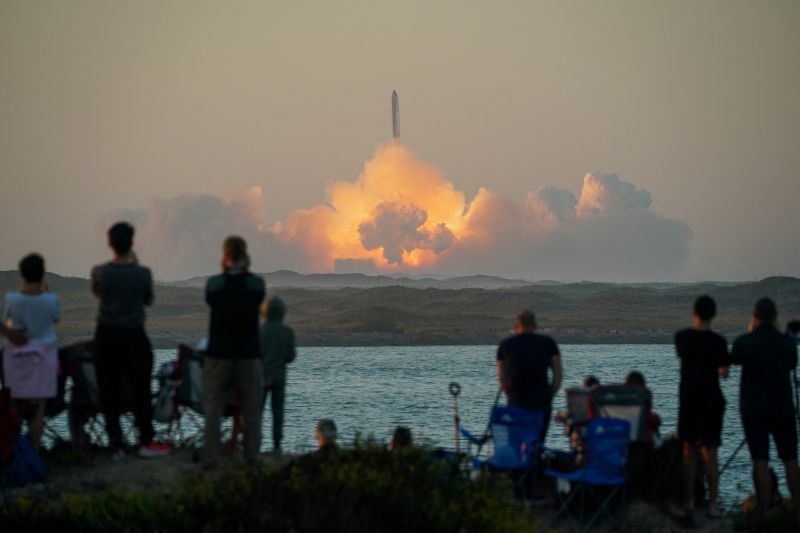
The Lunar Anthropocene: A New Era of Moon Exploration

As a new race to the moon heats up, the epoch is only beginning. The Lunar Anthropocene is suggested to have started in 1959, marking the beginning of humanity's endeavors to explore the moon. This article explores the impact of human exploration on the moon and the significance of declaring a Lunar Anthropocene.
The Dawn of the Lunar Anthropocene
For thousands of years, the moon inspired humans from afar, but it remained out of reach. This changed in 1959 when the former Soviet Union's spacecraft, Luna 2, landed on the moon, signaling the beginning of humanity's endeavors to explore the moon. Some scientists suggest that this marked the start of a new geological epoch called the 'Lunar Anthropocene.'
People watch as SpaceX's next-generation Starship spacecraft atop its powerful Super Heavy rocket lifts off from the company's Boca Chica launchpad on an uncrewed test flight, as seen from South Padre Island, near Brownsville, Texas, U.S. November 18, 2023. REUTERS/Go Nakamura TPX IMAGES OF THE DAY
The 'Lunar Anthropocene' is analogous to the discussion of the Anthropocene on Earth, exploring how much humans have impacted our planet. The consensus is that the Lunar Anthropocene has already commenced, and its recognition is crucial to prevent massive damage caused by human activities.
Humanity has left its mark on the moon in many ways, including impact craters left by spacecraft, lunar rover tracks, astronaut bootprints, science experiments and even family photos brought by astronauts.
Humanity's Lunar Footprint
Since Luna 2's landing, more than a hundred spacecraft have crashed and made soft landings on the moon, and humans have caused surface disturbances in at least 58 additional locations on the lunar surface. The moon is littered with the traces of exploration, including impact craters, lunar rover tracks, astronaut bootprints, and various objects left behind by missions.
Astronaut Eugene A. Cernan drove a lunar roving vehicle on the moon's surface during the Apollo 17 mission in 1972. It's still on the moon more than 50 years later.
The arrival of humans on the moon brought scientific equipment, spacecraft components, flags, photographs, and even unexpected items such as golf balls, bags of human excrement, and religious texts. Declaring a Lunar Anthropocene could make it clear that the moon is changing due to human exploration.
An astronaut's boot left an impression on the moon during the Apollo 11 mission.
Lunar Exploration Frenzy
A new space race is heating up, with multiple countries planning robotic and crewed missions to explore the moon's south pole and other unexplored regions. Missions from countries like India, Japan, and the United States are expected to attempt landings on the moon, with the ultimate goal of establishing a sustained human presence on the lunar surface.
The significance of our impact on the lunar surface, both in the past and ongoing, is emphasized as discussions about our influence on the moon's environment are initiated. The lunar landscape is set to change drastically as multiple countries vie for a presence on the moon.










